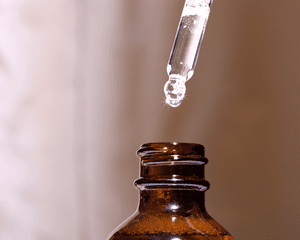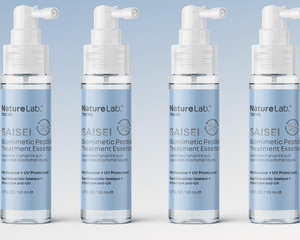:max_bytes(150000):strip_icc()/236701355_2959194320986990_2974378338774556720_n-c9340ec76ee742f085092ae90e8adcd8.jpg)
We generally think of cosmetic lasers as a way to get rid of things we might not want—and while hair removal is one of the most popular and well-known cosmetic laser treatments available, using the lasers for hair growth is also an option.
We decided we needed to know more, so we consulted the experts. Below, we dig into everything you need to know about lasers for hair regrowth, from how they work to what to expect.
Meet the Expert
- Amy Perlmutter, MD, is a board-certified dermatologist at New York Dermatology Group in New York City.
- Robin Blum, MD, FAAD, is a board-certified dermatologist at Central Park South Dermatology in New York City.
- Arash Akhavan, MD, FAAD, is a board-certified dermatologist and founder of The Dermatology and Laser Group in New York City.
How Lasers Can Stimulate Hair Regrowth
The first thing to understand is that not all lasers are created equally. The lasers used in hair removal are highly concentrated beams of light that penetrate hair follicles. Once the pigment in your hair absorbs that light, it converts it into heat, which then damages the follicle and prevents future hair growth. If you’re looking to promote hair growth, this kind of laser would be too harsh to help. It’s more of a scorched-earth laser than a tool to promote fertile soil.
The lasers used to promote hair growth, on the other hand, are cold, low-level lasers. These treatments rely more on the chemical effects of light (as opposed to the physical effects in laser hair removal), increasing blood flow to the outer dermis and thereby accelerating growth.
What Kind of Lasers Are Used for Hair Regrowth?
“Lasers that stimulate hair growth are called low-level lasers,” says New York-based dermatologist Dr. Arash Akhavan. “Low-level laser therapies (LLLT) project infrared light that penetrates the scalp.”
Fun fact: The reason we use lasers for hair growth is kind of an accident. In the 1960s, a Hungarian physicist was testing to see if lasers could cause cancer on lab mice (which had to be shaved for the protocol). Not only did the laser not cause cancer, it caused improved hair growth on the mouse.
How Does The Process Work?
Hair growth starts at the scalp, which is really the TL;DR of why these types of treatments work. “This light aids in improving circulation and increasing blood flow and oxygen to the hair follicles, therefore stimulating the stem cells to regenerate the follicle and encourage hair regrowth,” says Akhavan. That increase of blood flow also means more oxygen and nutrients make their way to the follicles, creating the best possible conditions for hair to grow.
A recent study showed that LLLT was effective in treating pattern hair loss with minimal side effects—with participants of various genders showing significantly increased density, regrowth, thickness, and even diameter. Another study showed the treatment's effectiveness on patients with alopecia.
Benefits of Lasers for Hair Regrowth
If you're learning about lasers for hair regrowth for the first time and think they could be game-changing, you very well may be right. If this treatment is a fit for your needs and budget, you're looking at a fairly easy experience with high hopes of stimulating the growth you want. A few main benefits are as follows:
- Stimulates hair regrowth
- Painless
- Safe
- Non-invasive
- Minimal side effects
We hear you: If you’re struggling with hair loss, you’re likely already experimenting with over-the-counter shampoos, thickening products, supplements, and prescriptions like Minoxidil. Why add a laser treatment to the mix? While there are plenty of options to help stimulate hair growth, laser therapy can be an excellent addition to a haircare regimen that also includes therapies like Propecia, Rogaine, Spironolactone, or PRP therapy, says New York-based dermatologist Dr. Robin Blum.
Plus, there’s not much to lose in trying if you’ve hit a dead end with other hair loss treatments. “There are minimal side effects,” Blum says. “It’s also painless, easy to use, and can even be done at home.”
Of course, there are a couple downsides to be aware of. “It’s time-consuming,” says Blum. “It has to be done several times a week, usually 30 minutes per session.” And you’ll never truly be finished, in the traditional sense of the word. “Hair loss never completely stops, so to continue to see hair growth, maintenance treatments are required,” adds New York-based dermatologist Dr. Amy Perlmutter.
Additionally, while initial studies have turned up promising results, there’s no real consensus on the best parameters (wavelength, pulse duration, or fluence) for results.
At Home vs. In-Office
“Therapies can be administered in an in-office setting, but there are also many portable devices that can be purchased to use at home,” Akhavan says. The kind you’re likely most familiar with are helmets, hats, or combs made with medical-grade laser diodes in them. FDA-approved LLLT devices like the CapillusOne Laser Cap for Hair Regrowth ($764) or the Hairmax Ultima 12 LaserComb are widely available (albeit pricey), which can make the multiple requisite sessions a week more convenient if you find this type of treatment works for you.
What to Expect During a Laser Hair Growth Treatment
No “beauty is pain” here—LLLT treatments are easy and shouldn’t cause any discomfort. All you need to do is make sure your hair is clean (with no styling products) and find a comfortable place to sit for anywhere from five to 30 minutes, depending on the device. Some, like the Capillus Laser Cap, will even time your sessions and shut off automatically when you’re done. “Patients should expect to see a bright red light, but not feel any sensations,” says Akhavan.
Of course, you’ll also have to be patient. Not only is upkeep a bit of a hassle, but results aren't really visible until three to six months into treatment—enough time for that increased blood flow to deliver healthy new hair growth. And like with so many treatments, you might not look exactly like the before and after photos you see online. “Results do vary from person to person and are not permanent. Some may see great results while others may not,” Akhavan cautions. “It is necessary to continue the treatments in order to maintain results and continue stimulating the cells.”
Potential Side Effects
One of the major benefits of laser treatments for hair growth is that side effects are very minimal, but there are still a few things to look out for. If you have sensitive skin, any amount of light may cause irritation or tenderness, Blum says, but that’s pretty rare. Those with scarring alopecia may want to confer with a dermatologist before trying any at-home light therapy. Blum also advises looking into any medications you might be on before jumping into the treatment, as some can cause photosensitivity.
The Cost
At-home LLLT devices range anywhere from $400 to $2000, depending on the strength of the wavelength and the technology involved. In office treatments start at a minimum of $75 per session.
Aftercare
LLLT laser treatments are fairly low-maintenance, and most people can resume normal activity without much downtime, if any. Perlmutter generally recommends avoiding washing your hair, prolonged sun exposure, and exercise for 24 hours after your treatment.
Final Takeaway
Although they're not the cheapest hair growth solution, laser treatments are a great alternative—or addition—to more well-known solutions like Minoxidil, Rogaine, or PRP. Even if you’re not experiencing serious hair loss and still want to boost your thickness, these devices might still be of interest. “They can be helpful to those who are not even experiencing hair loss, as it helps strengthen the hair and promote healthy growth,” Akhavan explains.
The biggest selling point? Unlike lasers for removal (again: hair, tattoos, aliens), LLLT is safe and should be relatively painless. Any treatment we can do at home in our sweatpants with hardly any downside is a rarity, and while it may take patience to see results—and persistence to keep it up—laser treatments for hair growth seem well worth it.




